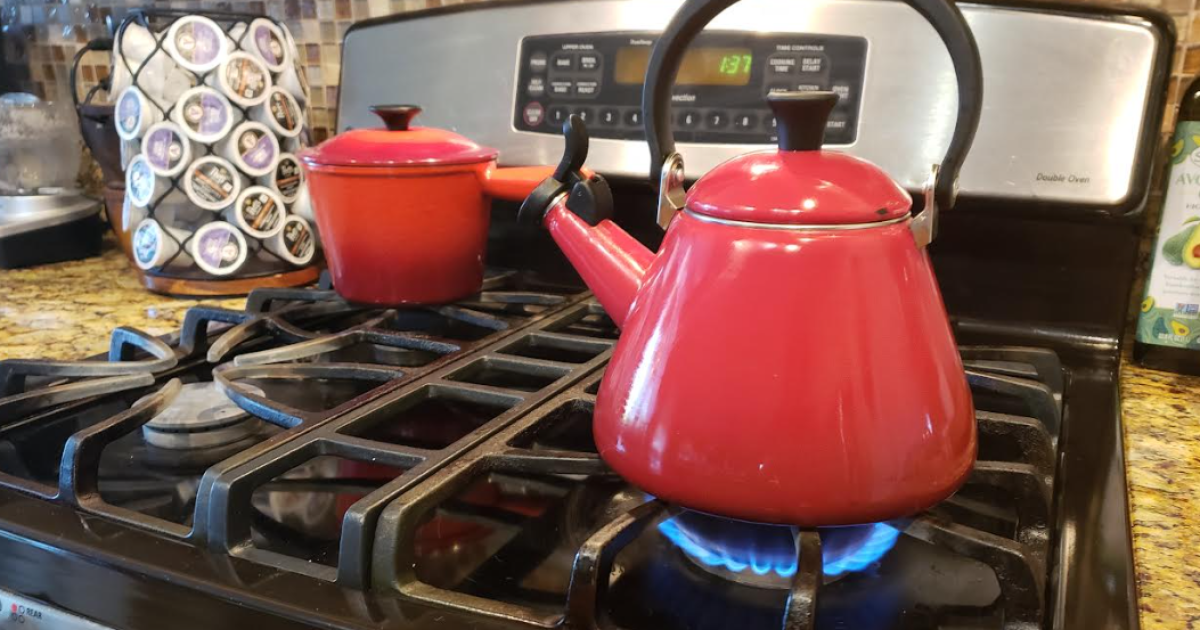
During the winter months, San Diegans’ gas and electric bills may rise. A typical local gas customer burns 23 therms of natural gas a month. The average climbs to 31 therms in December and to 45 therms in January.
With the higher energy use and higher energy rates, San Diego Gas and Electric customers’ bills are the highest they’ve ever been. The company said it’s due to many reasons, including rising natural gas prices.
The rising costs has had an obvious impact on customers — SDG&E has about $200 million dollars in delinquent customer debt. The utility hasn’t cut off power for overdue bills since 2020 but is expected to this year — the statewide COVID-19 ban on disconnections expired in 2021.
While the main issue is that energy prices are high, some consumers might wonder if there’s anything they can do to lower their bills. There’s two main things they can try — behavior changes (e.g., turning off lights) and using energy efficient products.
Here’s what some experts had to say about energy saving tips:
Adjusting temperatures in your home
The U.S. Department of Energy’s (DOE) latest report lists heating and cooling as some of the most energy-consuming items. In California, where the weather is usually more temperate than the rest of the U.S., residents spend a bit more on cooling rather than heating.
SDG&E has a list of its own energy saving tips on its website. One thing they recommend is adjusting your thermostat.
“Set the thermostat at 68 degrees during the day and lower at night, if health permits. Lowering the thermostat three to five degrees can save up to 10% on heating costs,” SDG&E’s website reads.
If you live in a house or apartment without a thermostat, caulking gaps in windows and doors might be an option to keep homes warm. This option requires a bit of DIY know-how and a trip to Home Depot.
“Those gaps can actually add up to quite a bit of air that’s lost,” said Jan Kleissl, director of the Center for Energy Research at UC San Diego. “It now goes out the door or the window and then you need to recondition the air that came in to replace it.”
And of course remembering to wear warm clothing and opening the blinds to let sunlight in are two low to no-cost options.
Turning off lights, equipment when not in use
Here’s an obvious one we might have been conditioned to do since childhood: turn off lights, heating, TVs and other household appliances when not in use. Kleissl stresses not running the heat or AC while you’re not home — it won’t keep the home nice and cozy when you arrive.
“You really actually use a lot more energy because you’re losing heat all day long. Whereas if you let the home cool down, you’ll stop the heat loss and then you will use less energy during the day,” Kleissl said.
Older appliances like TVs and computer towers might use energy when not in use when they’re plugged in — aka “phantom power.” For the most part, newer appliances in California are energy efficient due to government regulations, especially if they’ve been purchased within the past 10 years.
Change how you do household chores
Since heating water takes a lot of energy, any chores that you can do with cold water can help save energy. For example, washing clothes in cold water.
“Heating water is very energy intensive. Water has what we call in engineering ‘a high heat capacity,’ meaning you can store a lot of heat, which is good for many purposes, but it’s bad for how much energy needs to be used to heat it,” Kleissl said.
While many California appliances are fairly energy efficient, water heaters are not — unless they’re heat pump water heaters. A heat pump water heater pulls heat from the air around it and transfers it — at a higher temperature — to heat water. They can be two to three times more energy efficient than conventional water heaters.
You can also run appliances only when necessary. For example, run your dishwasher only when it’s completely full and do full loads of laundry.
Use energy efficient appliances
As stated above, many California appliances are already energy efficient. There are other products that can take efficiency a step further, however. It’ll require some investment but could be worth it in the long run.
When it comes time to buy new light bulbs, opt for LED light bulbs. Kleissl said these lights can save up to 70 to 80% energy usage.
Jason Anderson, CEO and president of nonprofit Cleantech San Diego, said there’s a number of products that can make homes more energy efficient. Many of these have rebates options. He suggests Nest Thermostats that can manage home temperatures for you and occupational sensors. Plugged into an outlet, these can turn your lighting on or off depending if a room is occupied or not.
“I would say individually maybe they don’t amount to much,” Anderson said. “But when you start to pair those with some of the no-cost solutions and other low-cost solutions, hopefully consumers will see a drop in their overall energy usage which in turn will hopefully drop their energy bill.”
If you’re not sure whether or not an appliance is energy efficient or not, you could consider investing in an energy meter. This tool measures energy usage of household appliances.
Try a different payment plan
If you haven’t already, switching to a SDG&E’s Time of Use Plan may yield some savings as well. Energy costs different prices at different points in the day. For example, energy used between 4 p.m. to 9 p.m. costs more than energy used between 12 a.m. and 6 a.m.
“(Time of Use Plans) mean that you are charged based on your energy usage at a different time of day,” Andersan said. “There’s plenty of resources online that can help consumers decide whether or not that makes sense for them, but Time of Use rates can oftentimes help consumers lower their energy bill.”
If you’re looking for something to help balance your budget more, the Level Bill Pay program through SDG&E might help. “(It) basically gives them an average rate per month, which allows (customers) to better account for energy cost,” Anderson said.
Sign up for bill assistance
A state program wiped out debts for SDG&E customers that had bills fall behind during the pandemic. But there’s still 25% of customers behind on bills and SDG&E is planning to start collecting on those.
Anthony Wagner, a SDG&E spokesperson, previously told KPBS that customers who are struggling still have options.
“As long as you’re in communication with us and you have a strategy with the utility on how to pay off your arrearage, you’re not going to get yourself disconnected, “But you have to be in communication with us.”
A third of the utility’s customers are enrolled in a rate assistance program. If you’re not and you’re interested in seeing if you qualify, the two biggest programs in the state are: California Alternate Rates for Energy and Family Electric Rate Assistance Programs. There’s also a payment assistance program for those that have a medical issue. Other assistance programs are detailed here.




